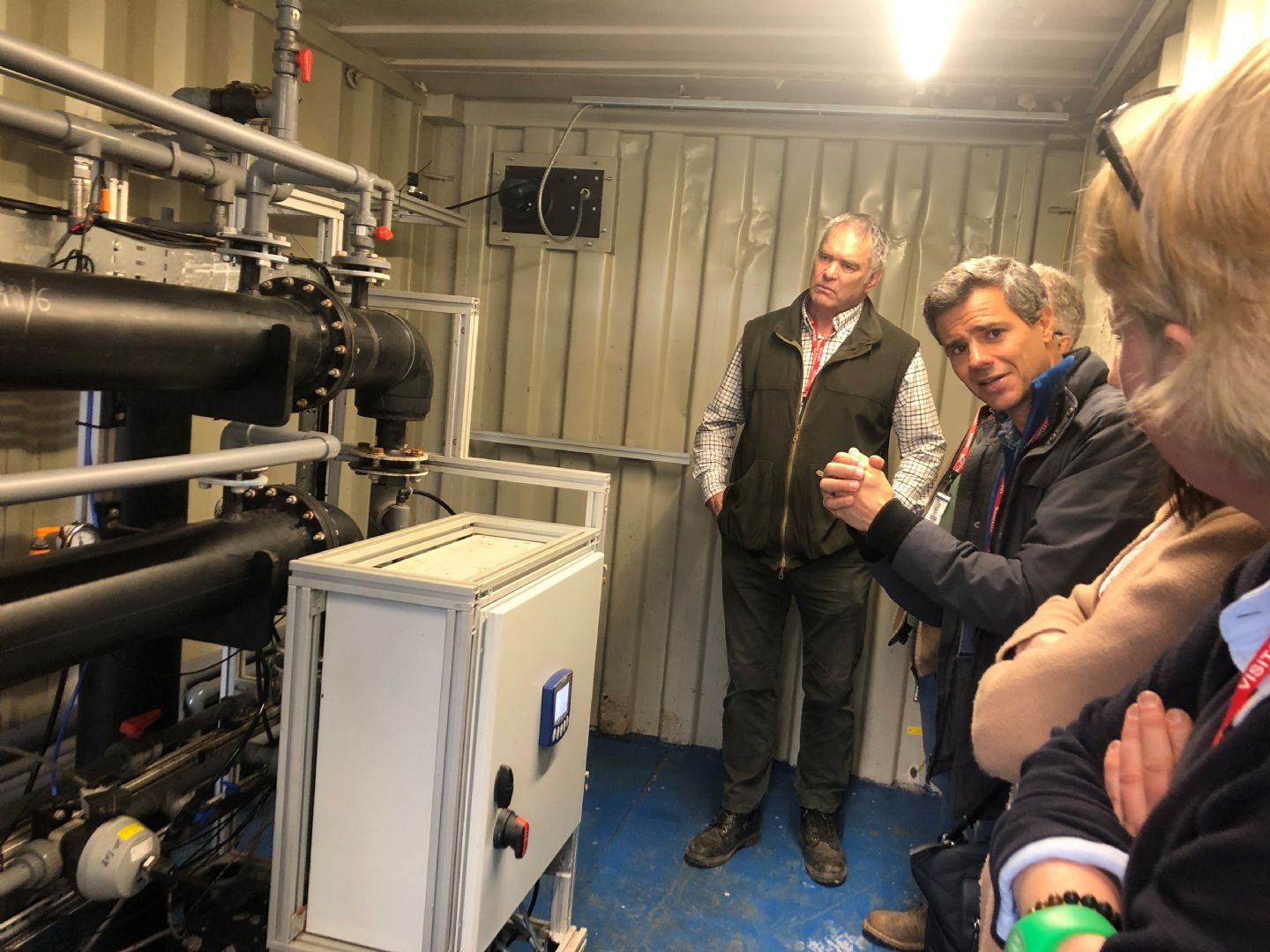
Electrogoagulation uses electrochemical receptors to coagulate and remove contaminants.
The midlands group from the Agricultural Immersion Centre, which is focused on finding solutions for the sustainable management of slurry and muck, recently visited Harper Adams University to find out about the Elentec trial and to discuss how the technology could be used on-farm.
How electrocoagulation can work on-farm
Electrocoagulation can be used to separate slurry into high and low phosphate fractions. This can add value to the components of the slurry, as the high phosphate fraction can be used as a sustainable phosphate fertiliser, the solids can be used as soil improver to support carbon sequestration and the low phosphate fraction can be used to develop a sustainable nitrogen fertiliser. Splitting the components in this way can also reduce pollution from application of raw slurry to cultivated land.
The on-farm electrocoagulation process involves several steps:
- After being stored in a reception tank, the slurry is passed through a separator to remove any large solids then stored again in a holding tank
- It is then passed through a microfiltrator to remove the fine solids, leaving what is known as ‘screened slurry’
- Electrocoagulation is then used to separate the screened slurry into a phosphate stripped effluent and a concentrated slurry which is high in phosphates
Uses of electrocoagulation treated slurry
As well as seeing the electrocoagulation equipment in action, the group also saw two experiments being undertaken to understand the bioavailability of electrocoagulation treated slurry on grass growth.
These include greenhouse based pot trials and field trials to look at the grazing sward application rates on permanent pasture.
The results from the greenhouse pot trial have shown a significantly higher fresh weight and dry matter yields in the plots which received the phosphate-rich fraction, compared with all other treatments (the low phosphate fraction, raw slurry, artificial fertiliser and water). The field trails are currently in progress.
Practicalities of using electrocoagulation technology on-farm
Following the visit, the group discussed the merits of the technology and the potential benefits for farm businesses adopting it. They identified that the modular nature of the components make it applicable for farms of a range of sizes and that it is not overly technical, so farmers will be able to learn how to operate it.
They also discussed the uncertainties around the use of electrocoagulation technology on-farm and identified where more information is needed. These included questions on how well the technology will handle different types of input, such as pig, poultry and cattle muck and whether the technology will compliment or conflict with existing regulations on slurry and muck management.
More information on the research can be found here. To stay up to date with further updates from the Agricultural Immersion Centre groups sign up to the Innovation for Agriculture monthly newsletter.




